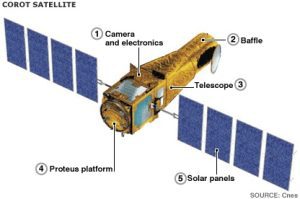Introduction to Satellite Components in Space
Satellites are complex machines that rely on a variety of components to perform specific functions while in orbit. These components ensure that satellites can carry out their primary missions, whether for Earth observation, communication, or scientific research. As the space industry continues to grow, so does the need for advanced and reliable satellite components in space, which are becoming more sophisticated and miniaturized.

Key Satellite Components in Space
There are several critical components found in most satellites. These components are responsible for the satellite’s operations and its ability to fulfill its mission.
1. Power Systems
A satellite’s power system is essential for keeping its components running. This system includes solar panels that convert sunlight into electricity, batteries that store the energy, and power converters to distribute it to various parts of the satellite. Without a reliable power system, the satellite would not be able to function.
2. Payloads
The payload is often considered the most important part of the satellite, as it directly carries out the satellite’s primary mission. Payloads can include imaging systems for Earth observation, communication equipment, and scientific instruments. Depending on the satellite’s purpose, the payload could be a camera, radar, or even a telescope, all designed to collect and transmit data back to Earth.
3. Propulsion Systems
Propulsion systems enable a satellite to maneuver in space, adjust its orbit, and maintain proper orientation. These systems often use thrusters powered by chemical or electric propulsion to adjust the satellite’s position and orientation. Propulsion is key to satellite maintenance and extends its operational life.
4. Communication Systems
Communication systems are responsible for transmitting data between the satellite and ground stations. They include antennas, transponders, and radios. These systems enable real-time communication and data transfer, which is vital for satellite operations in communication, GPS navigation, and weather forecasting.
Innovations in Satellite Components
As the space industry evolves, so do satellite components. Several innovations are transforming the way satellites are designed, leading to smaller, more powerful, and cost-effective solutions.
1. Miniaturization of Components
Miniaturization has led to the development of CubeSats and smallsats, which are compact and lightweight satellites with smaller components that perform the same functions as their larger counterparts. This innovation has opened up space to smaller companies and organizations, making space exploration more accessible.
2. Advanced Propulsion Technologies
Modern propulsion technologies, including electric and ion thrusters, have enhanced the performance of satellite propulsion systems. These technologies offer higher efficiency and less fuel consumption, enabling longer mission durations and more precise orbital adjustments.
3. On-Orbit Servicing
On-orbit servicing is a promising development that allows for satellite repair and maintenance in space. New satellite components are being designed to accommodate servicing missions, extending satellite life and reducing the need for costly replacement launches.
The Growing Demand for Satellite Components
With increasing demand for satellite services in communications, Earth observation, navigation, and scientific research, the need for reliable satellite components in space is on the rise. New space missions, including those for Mars exploration, remote sensing, and global internet coverage, are driving advancements in satellite technology.
Moreover, the commercialization of space has also contributed to a surge in demand for smaller, cheaper satellites. Companies like SpaceX and OneWeb are leading the charge in deploying large constellations of satellites, all of which rely on efficient and reliable components to function effectively.
Future Outlook for Satellite Components in Space
As the space industry continues to expand, satellite components will play an even greater role in enabling new missions and applications. Technological advancements are expected to further reduce costs and increase the efficiency and reliability of these components. With innovations in materials, miniaturization, and propulsion, the future of satellite components looks bright, paving the way for more accessible and sustainable space exploration.
Learn More About Satellite Platform Technologies
To dive deeper into the technologies that make satellite operations possible, explore our detailed article on satellite platform components. Discover the advancements and innovations shaping the future of space missions.
